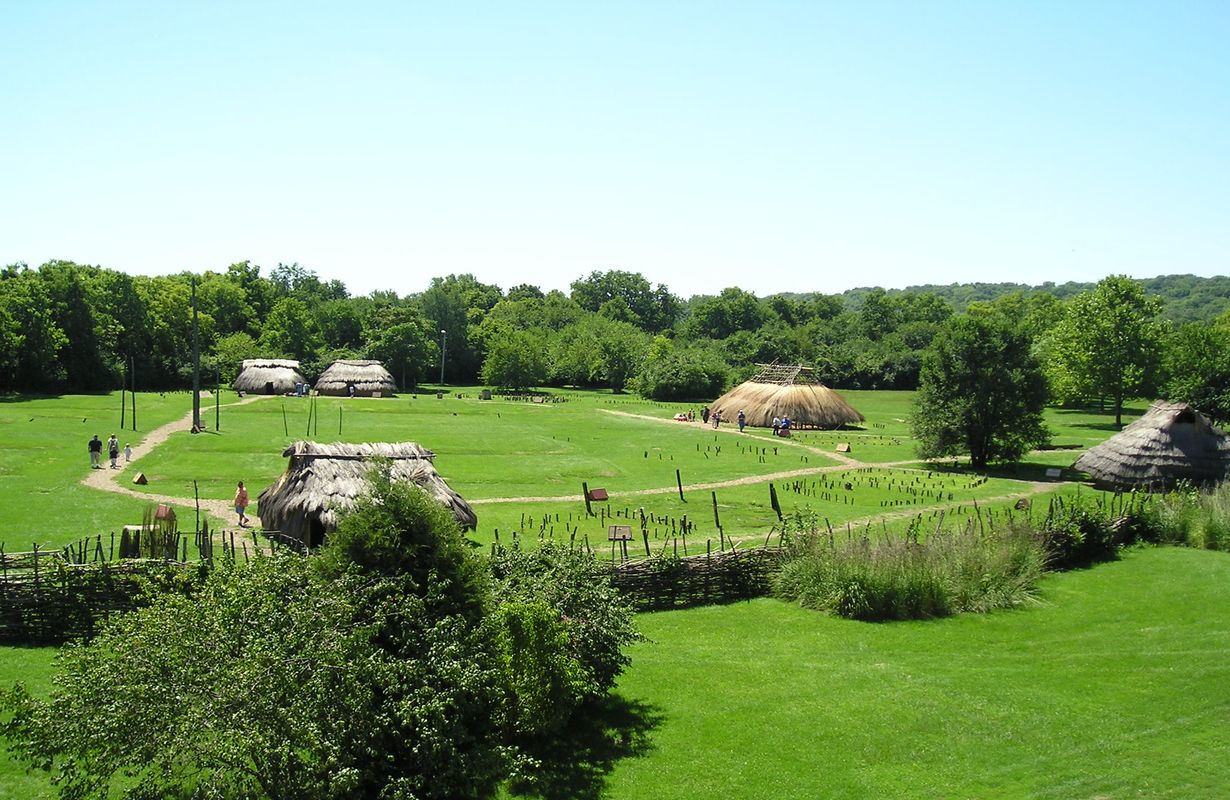Secrets Of Indiana’s Ancient Fort Culture

Have you ever wondered about the ancient cultures that once thrived in Indiana? The ancient fort culture of Indiana is a fascinating chapter in history. These ancient people built impressive earthworks and fortifications, some of which still stand today. Their structures reveal much about their way of life, beliefs, and social organization. Exploring these sites offers a glimpse into a world that existed long before modern times. From the mysterious mounds to the intricate designs, each site tells a unique story. Whether you're a history buff or just curious, learning about Indiana's ancient fort culture is a journey into the past that you won't forget.
Discovering Indiana's Ancient Fort Culture
Indiana, known for its rich history and diverse landscapes, hides a fascinating secret: ancient forts. These structures, built by Native American tribes, tell stories of a time long past. Let's explore some of these intriguing sites.
1. Angel Mounds State Historic Site
Angel Mounds, located near Evansville, stands as one of the best-preserved prehistoric Native American sites in the United States. This Mississippian culture settlement thrived from 1100 to 1450 AD.
- Mounds: The site features 11 earthen mounds used for ceremonial and residential purposes.
- Interpretive Center: Offers exhibits on the daily life and culture of the Mississippian people.
- Trails: Visitors can walk along trails that wind through the ancient village.
2. Fort Ouiatenon
Fort Ouiatenon, near West Lafayette, was established by the French in 1717. It served as a trading post and military fortification.
- Reenactments: Annual events bring history to life with reenactments of 18th-century life.
- Blockhouse Museum: Displays artifacts and provides insights into the fort's history.
- River Access: Located along the Wabash River, offering scenic views and picnic spots.
3. Mounds State Park
Mounds State Park, near Anderson, features earthworks built by the Adena-Hopewell people around 160 BC.
- Great Mound: The largest earthwork, used for ceremonial purposes.
- Nature Center: Offers educational programs about the park's natural and cultural history.
- Trails: Several trails provide access to the mounds and surrounding nature.
4. Prophetstown State Park
Prophetstown, near Battle Ground, commemorates the Native American village led by Tecumseh and his brother, the Prophet.
- Historic Farmstead: Demonstrates early 20th-century farming techniques.
- Native American Village: Reconstructed village showcasing the life of the Shawnee people.
- Trails: Paths that explore the prairie and wetland landscapes.
5. Fort Harrison State Park
Fort Harrison, located in Indianapolis, was a military training camp during World War I and II.
- Museum of 20th Century Warfare: Exhibits on military history and the fort's role in training soldiers.
- Historic Buildings: Several preserved structures from the fort's active years.
- Recreation: Hiking, fishing, and picnicking opportunities abound.
6. Falls of the Ohio State Park
Falls of the Ohio, near Clarksville, is known for its fossil beds and historical significance.
- Interpretive Center: Focuses on the area's natural and cultural history.
- Fossil Beds: One of the largest exposed Devonian fossil beds in the world.
- Lewis and Clark Expedition: The park marks the starting point of their famous journey.
7. Fort Wayne
Fort Wayne, named after General Anthony Wayne, played a crucial role in the Northwest Indian War.
- Historic Old Fort: A replica of the original fort, hosting reenactments and educational programs.
- Rivergreenway: A network of trails along the rivers, perfect for exploring the city's history.
- Museums: Several museums in the area provide deeper insights into the region's past.
8. Fort Vincennes
Fort Vincennes, also known as Fort Sackville, was a pivotal site during the American Revolutionary War.
- George Rogers Clark National Historical Park: Commemorates the capture of the fort by Clark's forces.
- Visitor Center: Offers exhibits and films about the fort's history.
- Monument: A grand memorial dedicated to George Rogers Clark and his men.
9. Fort Miami
Fort Miami, near Fort Wayne, was a French fort built in the late 17th century.
- Historic Site: Though little remains, the site is marked and interpreted for visitors.
- Educational Programs: Local organizations offer programs about the fort's history.
- Scenic Views: Located along the Maumee River, providing picturesque views.
10. Fort Harrison
Fort Harrison, near Terre Haute, was a War of 1812 fortification.
- Historic Marker: A marker commemorates the site of the fort.
- Reenactments: Occasional events bring the fort's history to life.
- Local Museums: Nearby museums provide additional context and artifacts.
Discover Indiana's Ancient Forts
Indiana's ancient forts offer a glimpse into a fascinating past. These structures, built by Native American cultures, showcase impressive engineering and strategic planning. Exploring sites like Angel Mounds and Fort Ouiatenon reveals the rich history of the region. Visitors can learn about the daily lives, trade practices, and defense mechanisms of these early inhabitants.
These forts are not just historical landmarks; they are a testament to the ingenuity and resilience of the people who built them. Whether you're a history buff or just curious, visiting these sites provides a unique educational experience. Indiana's ancient forts remind us of the state's diverse cultural heritage and the importance of preserving these treasures for future generations. Plan a visit to these remarkable sites and step back in time to appreciate the legacy left behind by Indiana's ancient fort builders.

